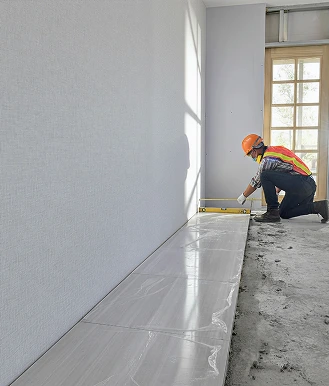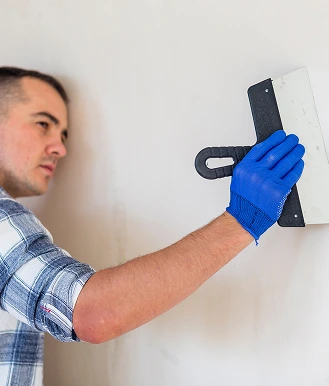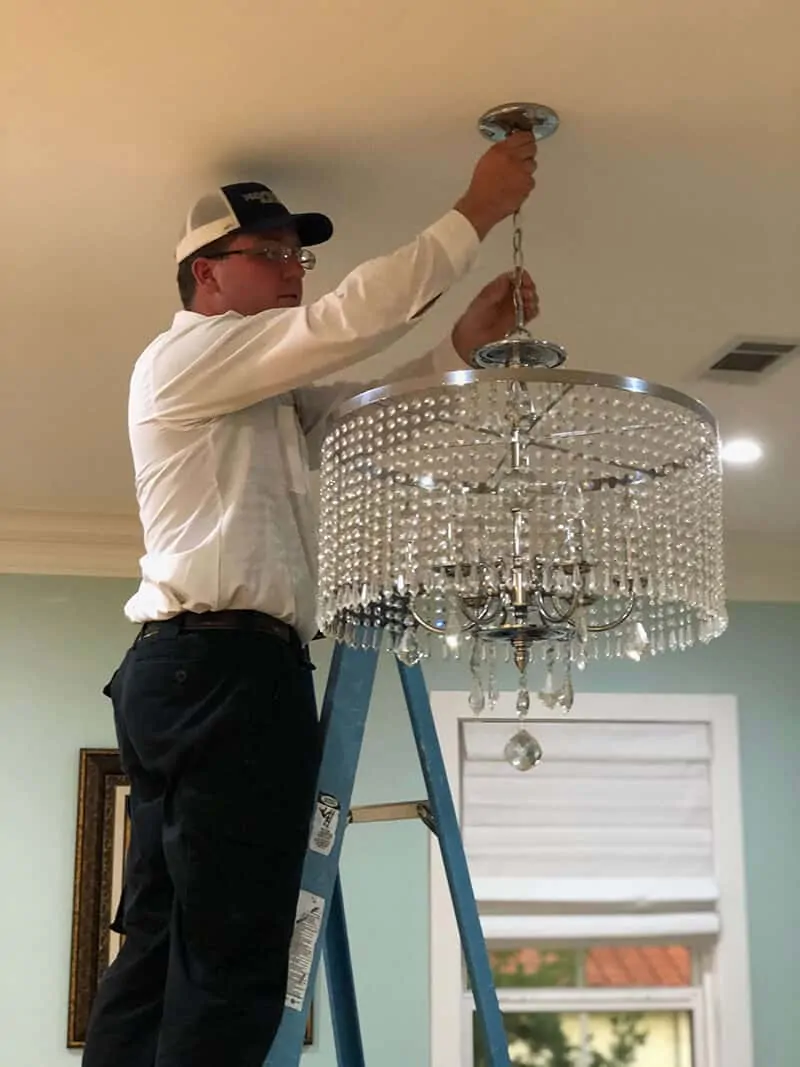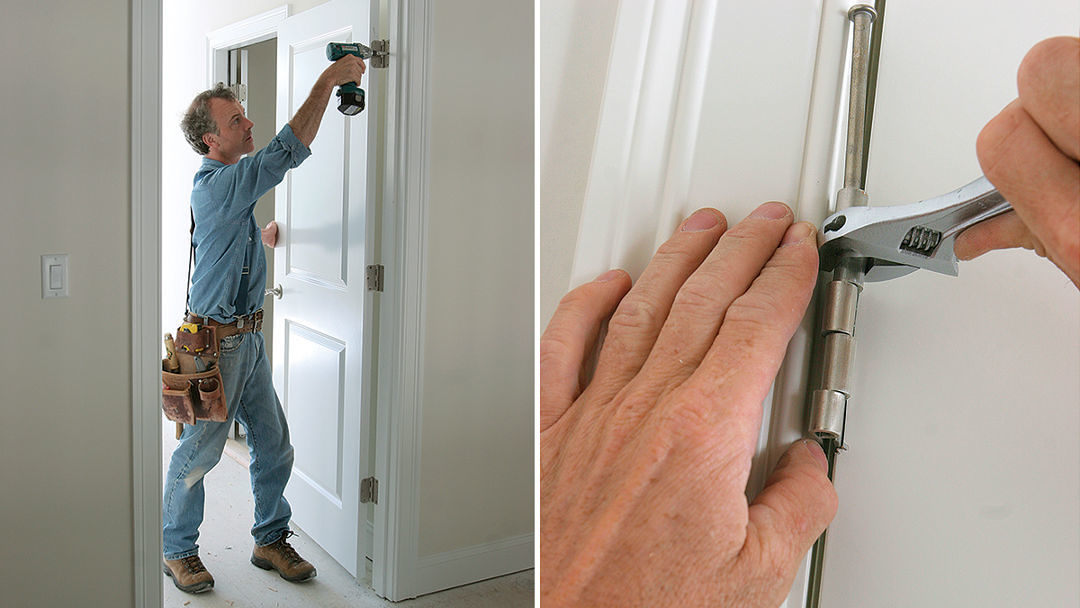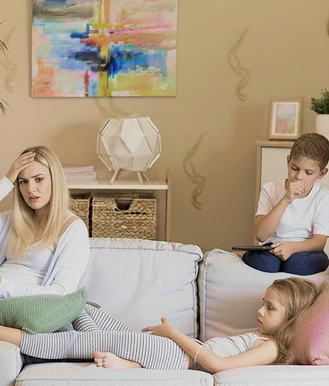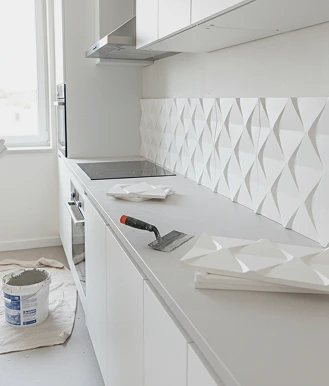Laminate flooring on the wall: a complete installation guide for US homes | Fix Concierge
Laminate Flooring on the Wall: A Comprehensive Installation Guide for Your US Home
Using laminate flooring on a wall is a popular design technique for creating a stylish, cozy accent. This material, traditionally used for floors, can transform a wall by adding texture and personality. However, the journey from concept to a flawless result is filled with nuances. This guide will help you evaluate the project comprehensively, from material selection to final installation, and decide whether to tackle it yourself or trust the work to a professional.
Unsure of your skills or prefer not to take the risk? An experienced technician will complete the work faster, with higher quality, and with a guarantee. Find a trusted specialist for any finishing work through the Fix Concierge Service app. We will match you with a pro who can perfectly handle your task.
Pros and Cons of Laminate Wall Decor: An In-Depth Evaluation
Key Advantages:
Exceptional Durability: Laminate, designed for intensive floor use, can last for decades on a wall without losing its appearance. It is highly resistant to scratches and abrasion.
Practical and Easy to Clean: The smooth laminated surface is simple to maintain. A damp cloth is usually sufficient to remove dust, splashes, or fingerprints, making it ideal for hallways, kitchens, or children's rooms.
Effective Visual Solution: A wide range of textures (wood, stone, concrete) and colors allows you to realize any design idea and create a striking accent wall.
Conceals Base Flaws: When installed on a furring strip framework, there is no need for perfect wall leveling. The frame will hide all unevenness, cracks, and other imperfections.
Relative Affordability: Laminate is often a budget-friendly alternative to natural wood paneling, decorative stone, or premium wall panels.
Hidden Challenges and Disadvantages:
Risk of Condensation and Mold: This is the primary concern. Walls need to "breathe." If installed incorrectly, especially in high-humidity areas (bathrooms, kitchens) or without proper ventilation, condensation can accumulate behind the laminate, leading to mold growth.
Structural Incompatibility: Laminate's click-lock joints are designed for horizontal installation where weight is evenly distributed and panels can be tapped together. On a wall, these maneuvers are difficult, often leading to imperfect seams and gaps.
Voided Warranty: Most manufacturers void their warranty if the product is not used for its intended purpose (i.e., on a floor).
Visually Weighs Down a Space: Using laminate on all walls in a small room can create a "boxed-in" effect, making the room feel narrower and darker. It is best used as an accent.
Zero Insulation Properties: Laminate itself offers no thermal or sound insulation. If needed, insulation materials must be installed within the furring strips, increasing cost and complexity.
Professional Opinion: "Laminate is, first and foremost, a floor covering. Its design and locking system aren't engineered for vertical loads and long-term use in this position. Even with perfect installation, there's always a risk of material 'fatigue' and deformation. There are more suitable and technical solutions for walls, such as MDF or PVC wall panels, decorative plank paneling, or flexible laminate specifically designed for this purpose. An experienced Fix Concierge technician will not only do the job right but can also help you choose a material that is beautiful, durable, and safe for your walls."
Detailed Analysis of Installation Methods: Choosing the Best Path
Adhesive Mounting: Speed and Substrate Requirements
The Method: Laminate panels are fixed directly to the wall using a special construction adhesive (e.g., polyurethane adhesive, "Liquid Nails").
Ideal Conditions: An absolutely smooth, solid, clean, and primed base (drywall, plaster). The surface must be level, with deviations no greater than 1/16 inch over a 3-foot span.
Pros: Fast installation; the lack of a frame minimizes space loss.
Cons: Requires meticulous wall preparation. Demolition destroys the panels. High risk of peeling if installation protocols aren't followed precisely.
Verdict: Suitable for experienced DIYers with perfectly prepared walls.
Mounting on Furring Strips (Framing): Versatility and Reliability
The Method: A framework of wood strips or metal studs is secured to the wall, leveled to create a perfect plane. The laminate is then attached to this frame.
Ideal Conditions: Any wall, even those with significant unevenness. Allows for hiding utilities and adding insulation.
Pros: Hides all base flaws; provides a crucial air gap; allows for insulation; the most reliable method.
Cons: Reduces room dimensions by 1-2 inches on that wall; more labor-intensive and time-consuming.
Verdict: The most recommended and professional method, especially for American homes with their common frame construction.
Clip (Cleat) Mounting: Professional Elegance
The Method: Special metal clips grip the groove of the laminate plank, and the clip base is screwed to the furring strips or directly to a solid wall.
Ideal Conditions: The presence of a furring strip framework or a very solid base (concrete, brick).
Pros: Fasteners are completely hidden; doesn't damage the locking mechanism; allows for easier future disassembly; ensures a secure hold.
Cons: Requires precise layout of the furring strips, as the clips must align perfectly with the framework.
Verdict: A professional, clean, and reliable method ideal for high-quality installations.
Why This Project Is Often More Difficult Than It Seems
Even if you're handy with tools, installing laminate on a wall presents challenges that can undermine your efforts:
Room Geometry: Corners are rarely perfect 90-degree angles, and ceilings/floors are rarely perfectly parallel. Without experience and precise measuring, this leads to gaps and crooked seams.
Trimming and Cutting: Cutting laminate to fit around ceilings, floors, outlets, and switches requires precision and specific tools (a miter saw, jigsaw). Sloppy cuts will ruin the final look.
Weight of the Structure: A laminate wall covering has significant weight. Using the correct fasteners (anchors, screws) suited for your wall material (drywall, concrete, brick) is critical.
Thermal Expansion: Like any wood-based product, laminate expands and contracts with changes in temperature and humidity. It's essential to leave expansion gaps at the ceiling, floor, and adjacent walls, which are later covered by moldings and trim.
Do not let a creative project become a source of stress and frustration. Save your time and energy and guarantee a perfect result.
An Easy and Reliable Way to Find a Professional for Finishing Work
With the Fix Concierge Service app, you no longer need to spend days searching for a reliable pro, sifting through dozens of reviews, and questioning price estimates. We have made the process simple, transparent, and secure.
Just 4 Simple Steps to a Perfect Finish:
- Download the app for iPhone or Android. It takes less than a minute.
- Create a Detailed Task: Clearly describe the job (e.g., "Installing laminate on an accent wall in the living room, including building a furring strip frame"). Specify the square footage and upload photos of the room. This helps us find a specialist with the right experience.
- Get Matched with a Pro: Our system will automatically select the best performer in your area. You will receive a notification with their name, rating, and scheduled arrival time.
- Pay Conveniently: After you personally verify and approve the work, you can pay for the services in cash or via a secure transfer through the app.
Entrust your repair to professionals, and the search for a pro to us. Give yourself a beautiful interior without the hassle and risk! Download the Fix Concierge Service app today.

